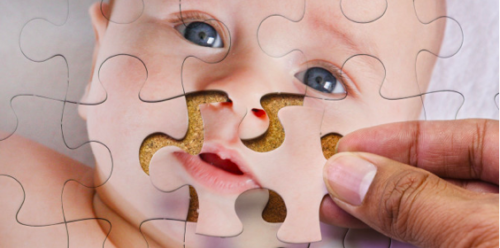Designer Babies

Ever thought if your future baby could have eyes as beautiful as your partner’s or have a sharp nose just as yours? With great advancement in medical technologies, these wishes can be fulfilled in the form of a “designer baby”.
The world’s first babies with CRISPR-Cas9 (Clustered Regularly Interspaced Short Palindromic Repeats)-edited genes were born in November 25, 2018 via gene editing performed by Dr. Jiankui He of Southern University of Science and Technology in Shenzhen.
How Are Designer Babies Made?
Most life contains DNA, including bacteria and viruses.
Viruses which attack bacteria are called bacteriophages and bacteria have developed defence mechanisms that attach to and destroy bacteriophages by cutting apart their DNA.
CRISPR-Cas9 is a more recently discovered such defensive tool used by bacteria. If a bacteria survives after an attack by a bacteriophage, CRISPR-Cas9 retains a small piece of the virus’s DNA. This retained memory helps the virus protect itself from future attacks from a similar species of bacteriophage.
CRISPR-Cas9 may be used to cut out a long sequence of DNA or to remove an entire gene from a cell’s DNA by using two CRISPR-Cas9 molecules designed to cut the DNA on both sides of the undesired sequence. However, cutting or disabling an entire gene from a cell’s functional DNA may have a negative effect on that organism, because many genes code for more than one protein.
Dr. He wanted to create embryos which would be resistant to most strains of HIV, the virus which causes AIDS. The gene CCR5 codes for a protein which most HIV strains use to enter cells and Dr. He wanted to eliminate the production of this protein in the embryos. The CRISPR-Cas9 enzymes were likely injected into the zygotes as close to the time of fertilization as possible.
Is There Another Side to The Story?
Dr. He was successful in modifying the genes of embryos that subsequently became babies. However, it is troubling that he did not achieve what he had initially set out to do.
In 2018, after studying two of the babies, Nina and Lulu, Dr. He reported that there were no changes other than in the CCR5 genes and this shows that CRISPR-Cas9 has no unintended changes. However, Lulu still has one normal CCR5 gene which will still produce the normal protein and she is still susceptible to HIV. The other child had mutations of her CCR5 genes that might still produce functional proteins, or as seen in animal experiments, might present with unintended health outcomes.
Is it really a good idea?
Pros of having designer babies, as the technology develops, would be:
- Can increase overall life expectancy- Using genetic alteration could increase a baby’s overall life expectancy by or allow one to discard most of an unborn baby’s defective genes.
- Reduces chances of various Genetic Disorders – this was the original intention of Dr. He, and as the technology develops we could have the option of practicing the elimination of diseases without having a harm on the health of the individual.
- You call the shots – As parents, you have the say in what all parts of baby’s life you want to change for the better.
The cons of having a designer baby would be:
- Human traits are extremely complex – The characteristics people associate with genes are height, looks and even athletic ability, and these traits are not governed by on or even a few genes. For example, a 2009 study estimated that 93,000 single nucleotide polymorphisms are required to explain 80% of the population variation in height, and hence the practice used by Dr. He would not be relevant in this situation.
- Ethical and moral aspects – During the process of genetic modification, one chooses which genetic traits are the “good” ones and which are not. This notion goes entirely against the idea of embracing oneself for who they are, including the flaws, and is inherently wrong on an ethical, moral, and even a spiritual level.
- Could even pose health issues – The technology of genetically modifying babies is still in its experimental phase and most countries regulate or ban genetic modification of human embryos for reproductive purposes or even research on human embryos.
- The potential for segregation – The difference between high-performing designer babies and the ones who are naturally conceived might lead to psychological and social conflict.
The technology is still taking baby steps of its own and it will be a long time before one might even get the option of having their baby genetically modified. This choice will cause huge controversy, ranging from the breaking of religious beliefs to ethical and moral arguments – just like topics like abortion pose in the present day.
Only time will tell which side of the dilemma mankind will stand on and if it will keep on its rampant march on taking over the role of the Gods.
Disclaimer: This content including advice provides generic information only. It is in no way a substitute for qualified medical opinion. Always consult a specialist or your own doctor for more information.
References:
- Obstetrics & Gynecology, ‘Genetically Modified Babies and a First Application of Clustered Regularly Interspaced Short Palindromic Repeats (CRISPR-Cas9)’, official website (accessed on 29th April, 2020)
- American Society For Microbiology, ‘The Designer Baby Distraction’, official website (accessed on 29th April, 2020)
Related Articles:
Source links for reference:
https://www.asm.org/Articles/Cultures-Magazine/Volume-4,-Issue-4-2017/The-Designer-Baby-Distraction
